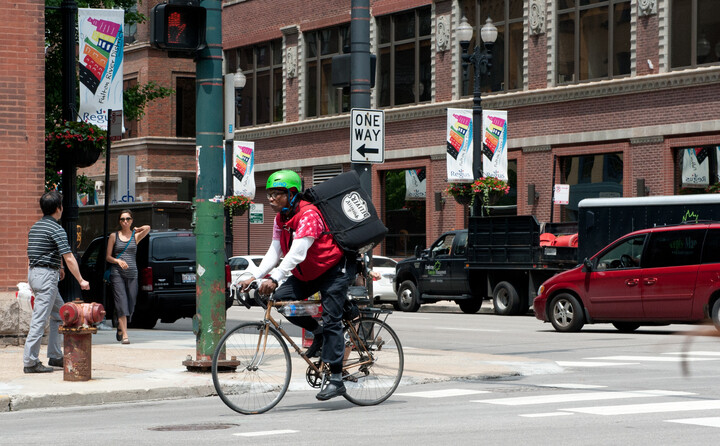Here’s something that might surprise you: Rolling through a stop sign on a bike — when done with care — can actually make streets safer for everyone.
While we’ve all been taught to treat stop signs as sacred, no matter our mode of transportation, new research is turning that old wisdom on its head.
Enter the “Safety Stop,” a smart, common-sense approach that lets people biking treat stop signs like yield signs when they have the right of way.
Known by several names — including the Idaho Stop, the Stop as Yield, and the Safety Stop — this technique is gaining traction across the country.
In Illinois, a Safety Stop bill has already cleared the State Senate with broad support and is now making its way through the House.
We’re optimistic that Illinois will soon join the growing list of states embracing this safer, more sensible approach for people on bikes.
Q: What exactly is the Safety Stop?
A: The Safety Stop is a law that allows people biking to treat stop signs as yield signs. Here’s how it works: If you’re riding a bike and approach a stop sign, you can roll through — provided you have the right of way.
If someone else, whether a pedestrian or another vehicle, gets to the intersection first, you must yield and stop as usual. The key is that the rules of right of way still apply, keeping everyone safe and traffic flowing smoothly.
Q: What does the research say about Safety Stop laws?
A: The numbers are in, and they’re compelling. Since more than a dozen states have adopted Safety Stop laws, researchers have been able to study their impact.
After Idaho enacted its law, bicyclist injuries from traffic crashes dropped by 14.5 percent in just one year.
Delaware saw an even bigger drop — bicyclist crashes at stop sign intersections fell by 23 percent in the 30 months after passing a similar law. The evidence is clear: Safety Stops make intersections safer for people on bikes.

Q: Why is the Safety Stop safer?
A: According to the National Highway Traffic Safety Administration, intersections are the trickiest — and some of the most dangerous — places for people biking.
The Safety Stop helps by reducing the time people on bikes spend in intersections. Instead of stopping completely and then slowly starting up again, cyclists can keep their momentum and clear the intersection quickly.
This not only makes them more visible to drivers but also helps prevent common crashes, like being “right hooked” by a car turning across the bike lane.
Q: What about concerns that this law will encourage cyclists to ignore stop signs altogether?
A: The Safety Stop doesn’t give people on bikes a free pass to blow through intersections.
The rules of right of way still stand: People on bikes must yield to people walking and to anyone who arrives at the intersection first.
If a motorist gets there before you do, you must stop and let them go. Recklessly riding through intersections remains illegal — and, of course, extremely dangerous.
The Safety Stop is about making intersections safer and more predictable, not about ignoring the rules.
The bottom line? The Safety Stop is a smart, research-backed way to make our roads safer for everyone — especially for people on bikes. With Illinois on the cusp of joining the movement, we’re one step closer to safer, more bike-friendly streets.

